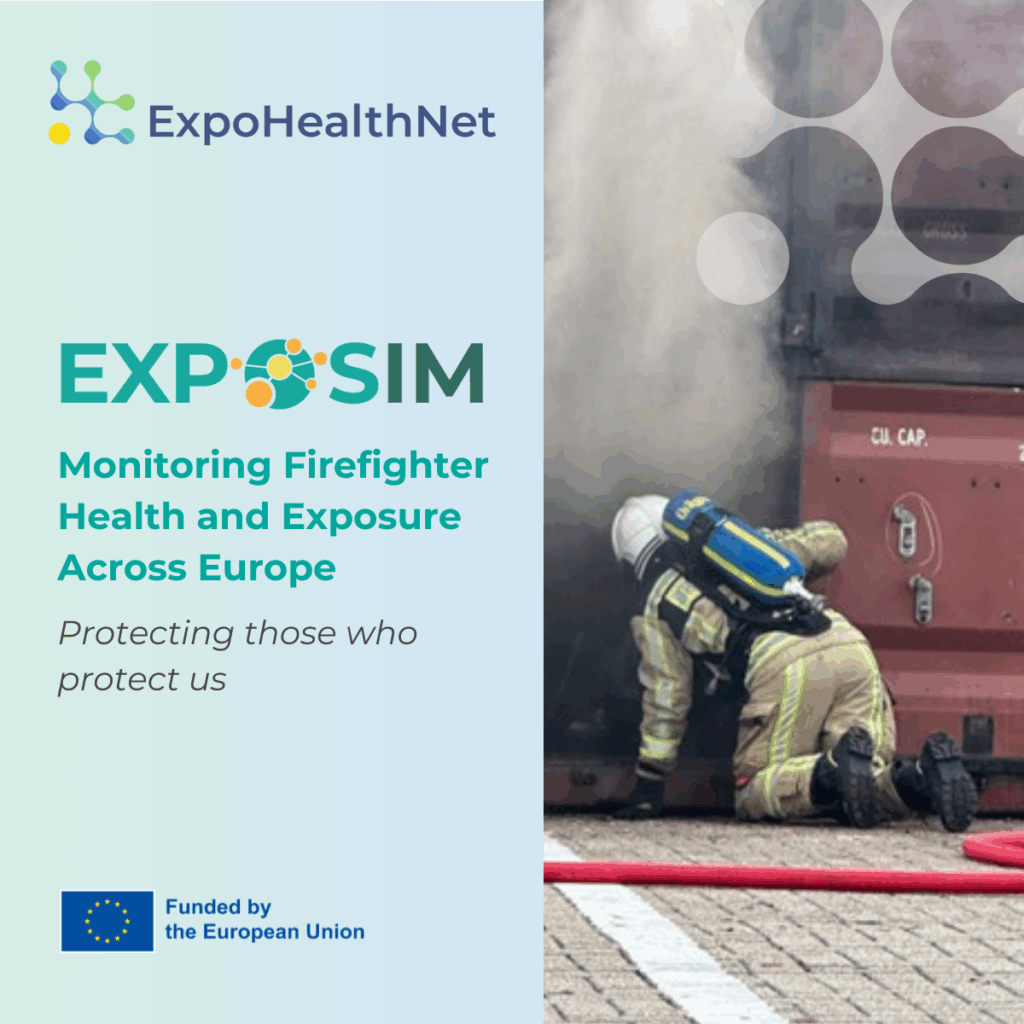
In EXPOSIM, exposure-reducing and health-promoting interventions in firefighters (WP9) is investigating occupational hazards faced by fire services in Europe and assessing the effectiveness of preventative measures. This comprehensive effort draws on studies established in several countries, including Belgium (KU Leuven), Portugal (NOVA), and Denmark (NRCWE).
Tackling Complex Chemical Exposures
Firefighters are routinely exposed to very high concentrations of multiple chemicals, including particulate matter (PM), polycyclic aromatic hydrocarbons (PAH), volatile organic compounds (VOCs) and per- and polyfluorinated alkyl substances (PFAS). Exposure to these complex mixtures occurs via inhalation and dermal contact during fire suppression activities. The hazards are compounded by modern synthetic materials used in buildings, which result in fire smoke containing additional hazardous chemicals.
The Health Imperative: Firefighting and Cancer Risk
Based on sufficient evidence from numerous well-conducted cohort studies, occupational exposure as a firefighter is classified as carcinogenic to humans (Group 1) by IARC-WHO. Specifically, positive associations were consistently observed for mesothelioma and cancer of the urinary bladder. The plausibility of this risk is supported by the documented exposure of firefighters to known carcinogens like asbestos (linked to mesothelioma) and PAH and nitrosamines (linked to bladder cancer). Further evidence suggests associations with cancers of the colon, prostate, testis, and non-Hodgkin lymphoma, although evidence for these sites remains limited (IARC-WHO, 2023).
Implementing Policy and Technical Interventions
A key component of the intervention strategy involves evaluating a policy intervention, specifically the EU restriction on PFAS in firefighting foams (European Commission, 2025). Researchers will measure the PFAS body burden in junior versus senior firefighters in Portugal and Belgium to evaluate the restriction’s effectiveness. The broader project investigates the effectiveness of policy, technical, and behavioural changes to reduce exposure to chemicals like PM, PAH, VOCs, and PFAS.
Work Completed So Far
- Several meetings occur between the different partners to discuss details on the study design
- Protocols for sampling and data collection is being developed
- Ethical Committees in each enrol country are being reached to inform on the submission of the protocols
- Already on the 7th and 8th of October, KU Leuven conducted two sampling days, where firefighters were exposed to two twenty-minute periods of fire exposure.
Learn more about the project on the EXPOSIM website.
